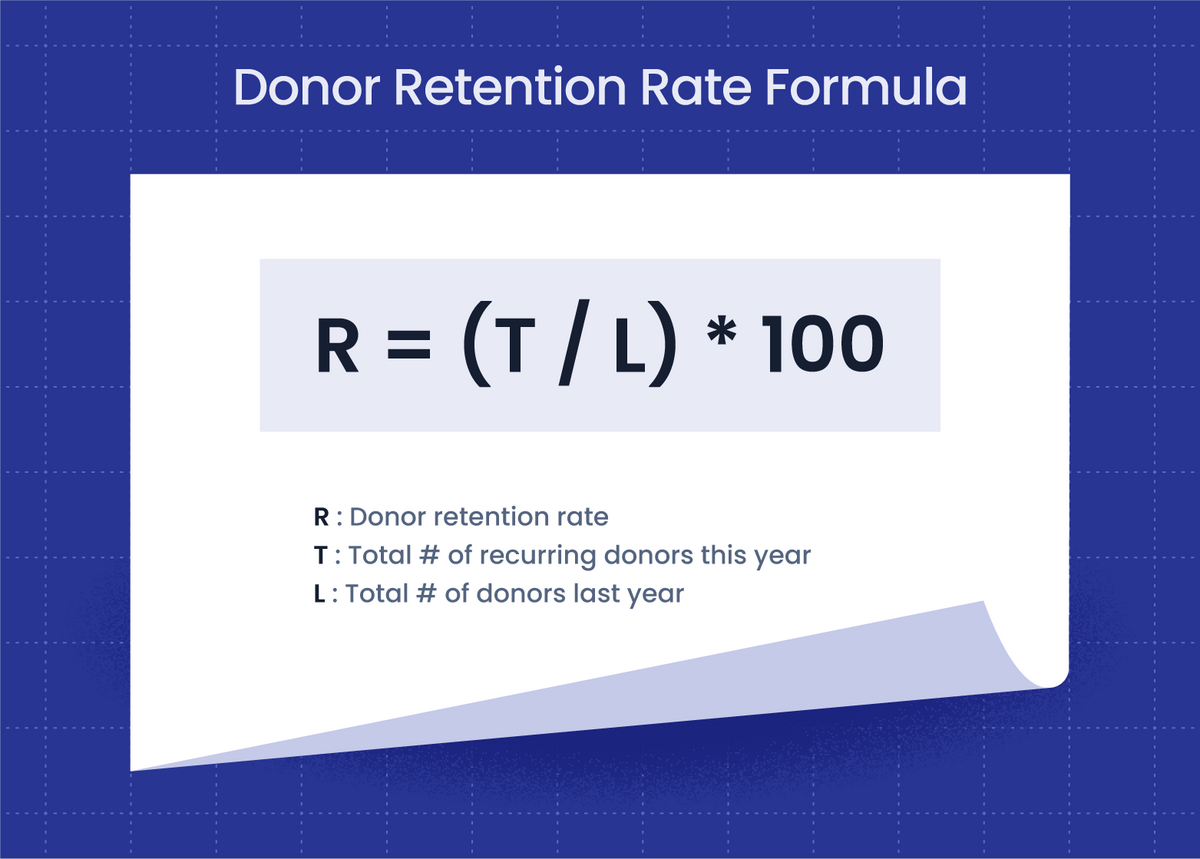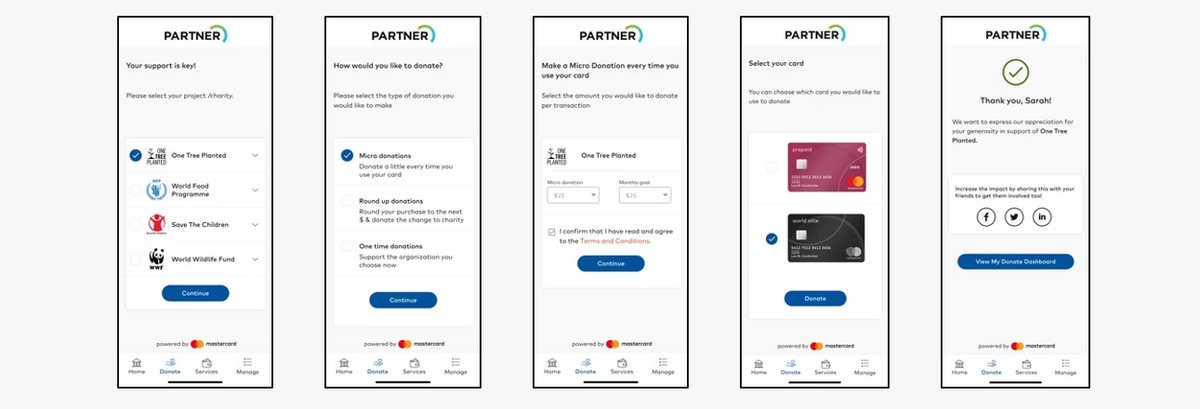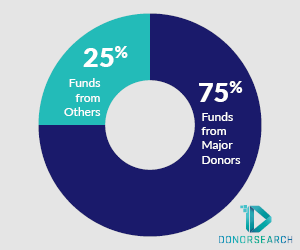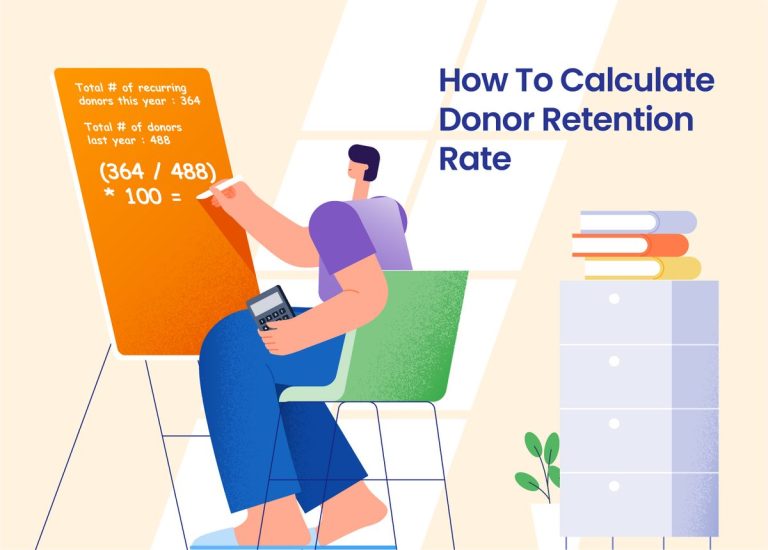Each year, donor retention becomes more important due to economic and global factors. So today, you’ll get to grips with the essential steps needed to measure your success in keeping donors engaged. We’re diving into why retaining donors is crucial for your mission’s longevity, and you’ll come away equipped with actionable tactics to track and improve these vital rates.
Today, we’re covering:
- What’s Donor Retention Rate, and What’s Its Significance
- Strategies to Elevate Your Donor Retention Rates by Segment
- The Role of Technology in Tracking and Enhancing Donor Retention Rate
- Leverage Micharity to Help Increase Your Donor Retention Rate
What’s Donor Retention Rate, and What’s Its Significance
The donor retention rate is a vital metric for any nonprofit organization. It measures the percentage of donors who continue to support your cause after their initial donation. Think of it as a gauge for loyalty, telling you how many supporters believe in your mission enough to donate again.
How to calculate donor retention rate
To put it simply, this rate reflects the staying power of your fundraising efforts. A high donor retention rate means more predictable revenue and less need to invest time and money into acquiring new donors.
So, how do you figure out your metrics? It’s a pretty simple formula, really. Use your current donor data in this equation:

( Total # of recurring donors this year / Total # of donors last year)*100 = Donor retention rate
Simply divide the number of folks who gave last year by those same givers who came back this year. According to the Fundraising Effectiveness Project, while historical retention rates were around 40-45%, the 2023 year-to-date average donor retention rate was much lower, running around 30%. This means there’s surely room for improvement in engaging your potential repeat donors.
The impact of high retention rates on nonprofit organizations
Did you know that, on average, it costs about 5x more to acquire a new donor than to leverage a recurring donor? That’s why donor retention is so important.
How to use your donor retention rate
So, how do you use this valuable number? Here’s what you should do:
- Calculate donor retention rate: Use the formula above or a software like Micharity.
- Segment your donors: Divide your donor base into segments based on criteria like donation frequency or amount to tailor retention strategies.
- Identify trends and patterns: Analyze retention rates across segments to identify trends and identify which groups need more attention.
- Understand reasons for attrition: Investigate reasons for donor attrition through surveys or feedback sessions to inform targeted retention strategies.
- Implement personalized communication: Develop personalized communication strategies for different donor segments based on their needs and interests.
- Show impact and appreciation: Communicate the impact of donations through success stories and express gratitude to reinforce the value of their support.
- Create retention campaigns: Develop campaigns tailored to re-engage donors at risk of lapsing, offering incentives or exclusive content.
- Monitor and adjust strategies: Continuously monitor the effectiveness of retention strategies, adjusting approaches based on changes in donor retention rates over time. Leveraging technology is the best way to do this.
Strategies to Elevate Your Donor Retention Rates by Segment
Robust donor retention strategies do wonders. They build trust with existing donors while laying down tracks for long-term sustainability.
Imagine if every second person decided not only to stay but also become a recurring giver! That kind of stability allows nonprofits like yours to dream bigger and act bolder without constantly worrying about next month’s budget shortfall.
But think about it. If you want to impact donor retention numbers, you need to approach each donor uniquely, depending on their giving level.
Here’s how:
Micro donors
Micro donors are the ones that have the greatest potential, in a way. Rather than seeing them as your lowest on the totem pole, see it as an opportunity to leverage your ability to build relationships and grow them into monthly donors or major donors.

Realistically, the more they feel valued, nurtured, seen, and appreciated – the more likely they are to become a recurring donor. Realistically, there may be more opportunity here because major gift donors sometimes just donate one large sum every few years or once a decade.
You want to help every small-scale giver see where they fit, and that’s where you’ll gain the opportunity to increase your donor retention rate. For them, it’s all about feeling included and knowing that every penny counts toward something bigger than themselves.
Here are a few things to leverage:
- Ensure you’re personalizing every communication—even if it’s a $20 donation. Personalization helps create a sense of belonging and importance, making donors more likely to stay engaged.
- Foster a sense of community among micro donors by creating forums or online platforms where they can connect with each other and share their experiences. Recognize and celebrate their contributions on the platform.
- Seek their input and actively involve them in decision-making processes related to your organization’s activities. The more invested, the more they’re likely to increase their donations.
Monthly donors
The donation frequency of monthly donors is crucial for operating expenses and overhead.
- Ensure monthly donors are signing up for a certain amount of time – not just one month. Ideally, you want to leverage these relationships for a year or more. Provide more donor perks for longer durations of time when they sign up.
- Tweak your annual appeal to promote monthly donor benefits rather than going after a one-time amount.
- Engage them via volunteer activities that allow them to see firsthand the cause they’re impacting and what is still needed for success.
- Improve their experience with an exclusive membership portal so they can track their own donation history and communicate more easily.
Major donors
Bearing witness to decreased retention amongst significant benefactors reminds us that personal touches go far beyond mere transactions; rather, they build trust over time, leading to lasting partnerships with major givers whose influence can steer the course forward for any nonprofit organization seeking sustainability amidst fluctuating economic climates.

While thanking donors is great, major donors tend to require touchpoints. Keeping major donors informed with more exclusive, high-level, and frequent interactions is key. Here are a few ideas:
- Create exclusive quarterly reports that show the direct impact of their substantial gifts.
- Send personalized video messages from your CEO sharing a message that truly makes them feel connected to the team and the mission. Plus, it helps build trust.
- Extend invitations to VIP events for major donors only.
The Role of Technology in Tracking and Enhancing Donor Retention Rate
Nonprofit donor retention is like maintaining a garden; it needs regular attention and the right tools. In today’s digital age, fundraising intelligence software serves as an essential toolset for nonprofits aiming to nurture their donor relationships effectively.
Fundraising intelligence software helps organizations track donation patterns, identify average retention rates, understand donor behaviors, and create targeted strategies to keep supporters invested.
Ultimately, it turns raw data into actionable insights that can lead to stronger connections with your contributors—saving your team immense amounts of time and effort.
Leveraging data for improved engagement
To maintain robust relationships with donors, paying attention to their interactions is key. With fundraising platforms such as Micharity, you’re equipped not just to collect data but also to analyze it meaningfully—spotting trends in donation amounts or identifying recurring donors who may need more personalized outreach.

This strategic use of technology lets you stay ahead by adapting retention techniques based on real-time feedback from your supporters. It enables personalization at scale—a vital aspect when considering that repeat donations are often linked with how valued and connected donors feel toward your cause.
Crafting tailored strategies using software insights
Beyond tracking metrics like the total number of retained donors over time, these modern solutions provide deeper dives into each supporter’s journey.
They help build long-term engagement plans suited for various donor segments—from micro-donors contributing small amounts regularly to major givers offering substantial support less frequently.
Fundraising effectiveness reports from your donor CRM can help identify where you need more strategies, who you should engage with and when, and more.
Navigating challenges with advanced analytics
In facing challenges like lapsed donors or falling retention rates, advanced analytics offer nonprofits a lifeline.
For example, effectiveness project studies demonstrate that using predictive modeling can forecast potential drop-offs before they occur, allowing preemptive action—a critical step towards sustaining high donor retention rates over consecutive years.
Leverage Micharity to Help Increase Your Donor Retention Rate
Mastering how to calculate donor retention rate and use it to guide your nonprofit fundraising efforts is vital. While some level of donor attrition is inevitable, high donor retention means stability and growth.
Remember:
- Every retained donor is a vote of confidence in your cause. And every percentage point increase can dramatically boost your funding potential.
- Don’t overlook trends; they’re signposts guiding you toward smarter engagement strategies for all types of donors—major, monthly, or micro.
- Tech tools are allies here. Use them well to track and nurture those crucial supporter relationships.
In closing, keep it focused on impact—the more personal and engaging the experience, the stronger the bond with each valuable supporter will be. If you want reliable software to make your donor retention efforts simpler, book a demo to experience Stratly’s unrivaled donor retention features.

